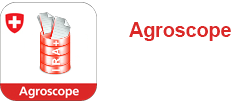Arbuscular mycorrhizal fungi (AMF) colonize the roots of numerous aquatic and wetland plants, but the establishment and functioning of mycorrhizal symbiosis in submerged habitats have received only little attention. Three pot experiments were conducted to study the interaction of isoetid plants with native AMF. In the frst experiment, arbuscular mycorrhizal (AM) symbiosis did not establish in roots of Isoëtes echinospora and I. lacustris, while Littorella unifora roots were highly colonized. Shoot and root biomass of L. unifora were, however, not afected by AMF inoculation, and only one of nine AMF isolates signifcantly increased shoot P concentration. In the second experiment, we compared colonization by three Glomus tetrastratosum isolates of diferent cultivation history and origin (aquatic versus terrestrial) and their efects on L. unifora growth and phosphorus nutrition under submerged versus terrestrial conditions. The submerged cultivation considerably slowed, but did not inhibit mycorrhizal root colonization, regardless of isolate identity. Inoculation with any AMF isolate improved plant growth and P uptake under terrestrial, but not submerged conditions. In the fnal experiment, we compared the communities of AMF established in two cultivation regimes of trap cultures with lake sediments, either submerged on L. unifora or terrestrial on Zea mays. After 2-year cultivation, we did not detect a signifcant efect of cultivation regime on AMF community composition. In summary, although submerged conditions do not preclude the development of functional AM symbiosis, the contribution of these symbiotic fungi to the ftness of their hosts seems to be considerably less than under terrestrial conditions.
Sudová R., Rydlová J., Čtvrtlíková,M., Kohout P., Oehl F., Voříšková,J., Kolaříková Z.
Symbiosis of isoetid plant species with arbuscular mycorrhizal fungi under aquatic versus terrestrial conditions.
Mycorrhiza, 31, 2021, 273-288.
ISSN Print: 0940-6360
Digital Object Identifier (DOI): https://doi.org/10.1007/s00572-020-01017-y
Publication-ID (Web Code): 45844 Sending by e-mail










